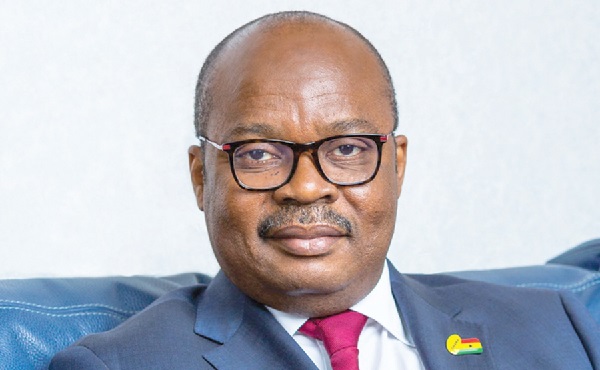
Framework to assess implications of banks’ strategic decisions in the offing
THE Bank of Ghana (BoG) is developing a framework that will assess the implications of bank’s strategic decisions and alignments with their risk appetites.
This follows the impact of the domestic debt exchange programme (DDEP) on banks, some of whom were overly exposed to government bonds.
The DDEP, which saw the government swap old bonds totalling GH¢82 billion for 12 new ones at reduced coupon rates and longer tenors hit hard at banks in the country, with 16 out of the 23 universal banks operating in the country recording significant losses for the 2022 financial year.
The BoG has indicated that the banking sector made total losses of about GH¢8 billion due to the DDEP.
Banks’ activities on the bond market has been cited as a clear breach of the Specialised Deposit-Taking Act (Act 930), which places a 25 per cent limit on banks’ financial exposure to a single individual or entity, with some of them having between 30 to 50 per cent of their net funds in government securities.
At the 40th annual general meeting of the Ghana Association of Banks (GAB), the Governor of the BoG, Dr Ernest Addison, said in strategising for the years ahead to ensure financial stability, the central bank had commenced the development of a Business Model and Viability Analysis (BMVA) Framework to enhance its supervisory practices for assessing the sustainability of banks’ business models.
He said the BMA would allow supervisors to identify banks’ vulnerabilities at an early stage and ensure safety and soundness.
“Following the adverse impact of the DDEP, the Bank of Ghana is focused on assessing the implications of banks’ strategic decisions and alignment with their risk appetites,” he stated.
Limited asset quality review
He said the BoG had also incorporated a limited Asset Quality Review in its supervisory programme for 2023, noting that that special exercise was being conducted to assess the health of banks’ loan and investment portfolios.
This, he said, was to determine if their asset classification was in line with the BoG’s classification norms as well as International financial reporting standards.
Dr Addison also noted that as a sequel to the implementation of Pillar 1 of the Basel II/III implementation in 2018, the Bank of Ghana intended to scale up the regulatory reform agenda through a series of engagements with the GAB on the roll-out of Pillar 2 of the Basel II/III capital framework.
He said the framework would ensure that banks held adequate capital for all material risks inherent in their operations.
In this regard, he said regulatory guidance would be provided in liquidity risk management; internal capital adequacy assessment process (ICAAP); guide to supervisory intervention; concentration risk; and interest rate risk in the banking book.
Recapitalisation
Dr Addison also reiterated that banks had a period of three years to rebuild their capital buffers post DDEP.
Although the 2022 audited financial statements of banks pointed to some impairments in capital levels, most banks, however, posted Capital Adequacy Ratios (CAR) above the 10 per cent regulatory minimum requirement in 2022.
The Governor said the positive CARs was attributed to the regulatory reliefs granted banks to cushion them against the adverse effects of the DDEP, as was done during the height of the COVID-19 pandemic.
Some of the relief include the reduction of the capital conservation buffer from three per cent to zero per cent, effectively reducing the minimum capital adequacy ratio from 13 per cent to 10 per cent; and spreading of losses emanating from the DDEP equally over a four-year period beginning 2022 to 2025.
Others are granting banks a maximum period of four years to restore the minimum paid-up capital as a result of any capital shortfall arising solely from the DDEP losses; increasing in Tier 2 component of regulatory capital from two per cent to three per cent of total Risk Weighted Assets (RWAs); and the reduction of minimum Common Equity Tier 1 capital from 6.5 per cent to 5.5 per cent of total RWAs.